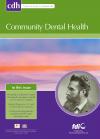Community Dental Health

- Cover Date:
- September 2008
- Print ISSN:
- 0265 539X
- Vol:
- 25
- Issue:
- 3
Prevalence of breath malodour in 7-11 year old children living in Middle Anatolia, Turkey.
Objective: To determine the prevalence of breath malodour and to assess the relationships between breath malodour parameters such as dental caries, habitual mouth breathing, tooth-brushing, and the frequency of upper respiratory-tract infection. Methods: A total of 628 healthy children (327 boys, 301 girls) ranging in age from 7 to 11 who were living in Kirikkale, Middle Anatolia, Turkey were included. Subjects who were taking antibiotics, having any suspicion of upper respiratory tract infection, sinusitis or tonsillitis at the time of survey were excluded from the study. Oral malodour assessment was carried out by organoleptic method. The DMFT/S was used to record caries. Pearson’s correlation coefficients were calculated to determine the association of each clinical variable to organoleptic oral malodour rating. Bivariate logistic regression analysis was performed to detect the degree of association between oral malodour and various dental-habitual parameters. Results: The prevalence of halitosis was 14.5%. Organoleptic oral malodour ratings were significantly higher in older age groups. Gender, frequency of tooth brushing, habitual mouth breathing did not influence oral malodour ratings. D(T), DMF(T), d(s) played the most significant role in higher oral malodour ratings, followed by d(t) and df(s). The frequency of tooth brushing, habitual mouth breathing did not contribute to the prevalence of halitosis:. Conclusion: Age, prevalence and severity of dental caries were significantly related to breath malodour.
Key words: Breath malodour, dental caries, halitosis,. organoleptic rating.
- Article Price
- £15.00
- Institution Article Price
- £
- Page Start
- 173
- Page End
- 177
- Authors
- R. Nalçacı, T. Dülgergil, A.A. Oba, İ.E. Gelgör
Articles from this issue
- Title
- Pg. Start
- Pg. End
- Comparison of two methods in deriving a short version of oral health-related quality of life measure.
- 132
- 136
- The presenting complaints of low income adults for emergency dental care: An analysis of 35,000 episodes in Victoria, Australia.
- 143
- 147
- Cariogenic and erosive potential of the medication used by HIV-infected children: pH and sugar concentration
- 170
- 172
- Enamel fluorosis in 12- and 15-year-old school children in Costa Rica. Results of a National Survey, 1999
- 178
- 184
- Short Communication - Fissure sealants on permanent first molars – consequences of a one-year delay
- 191
- 192
